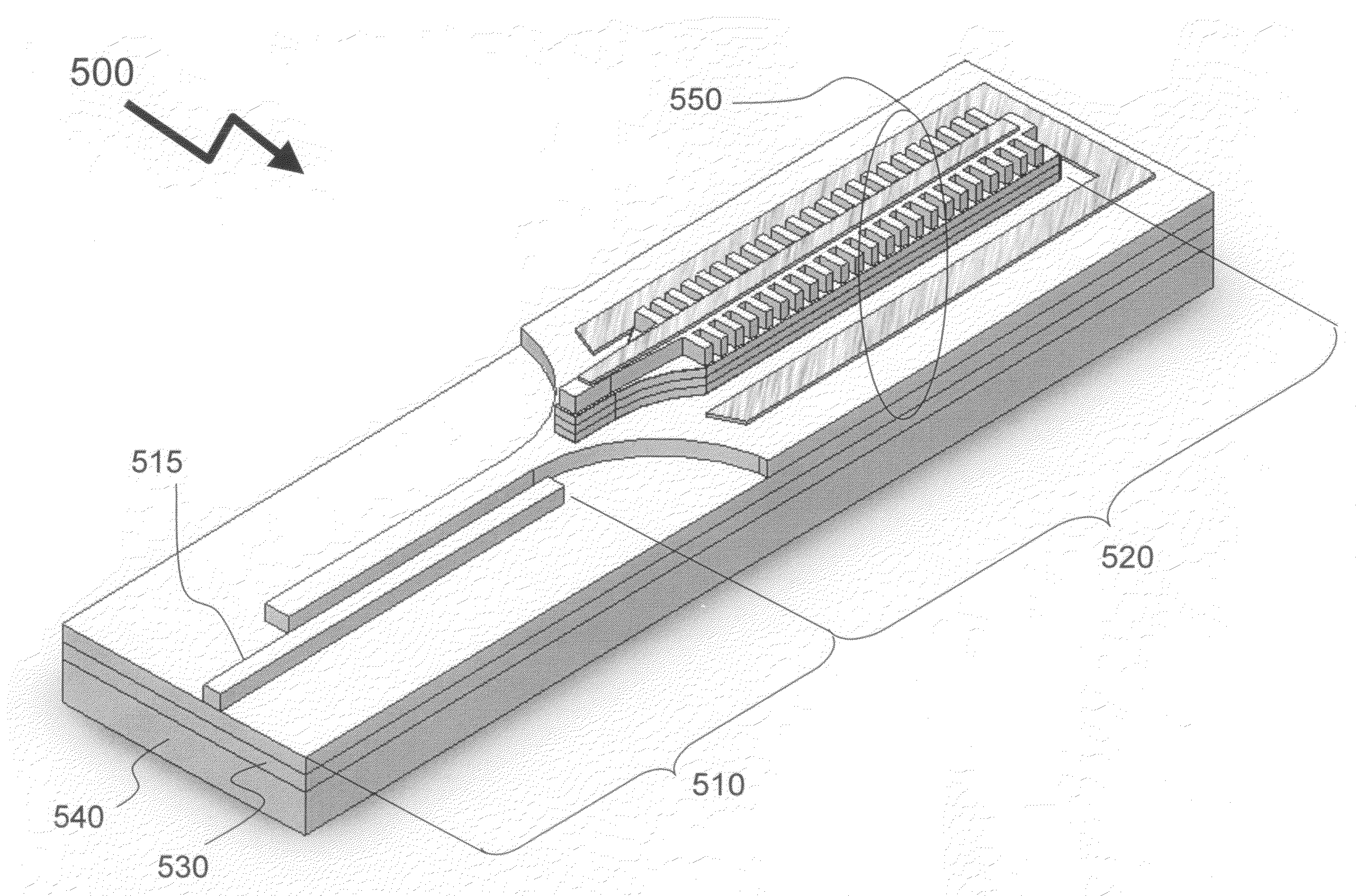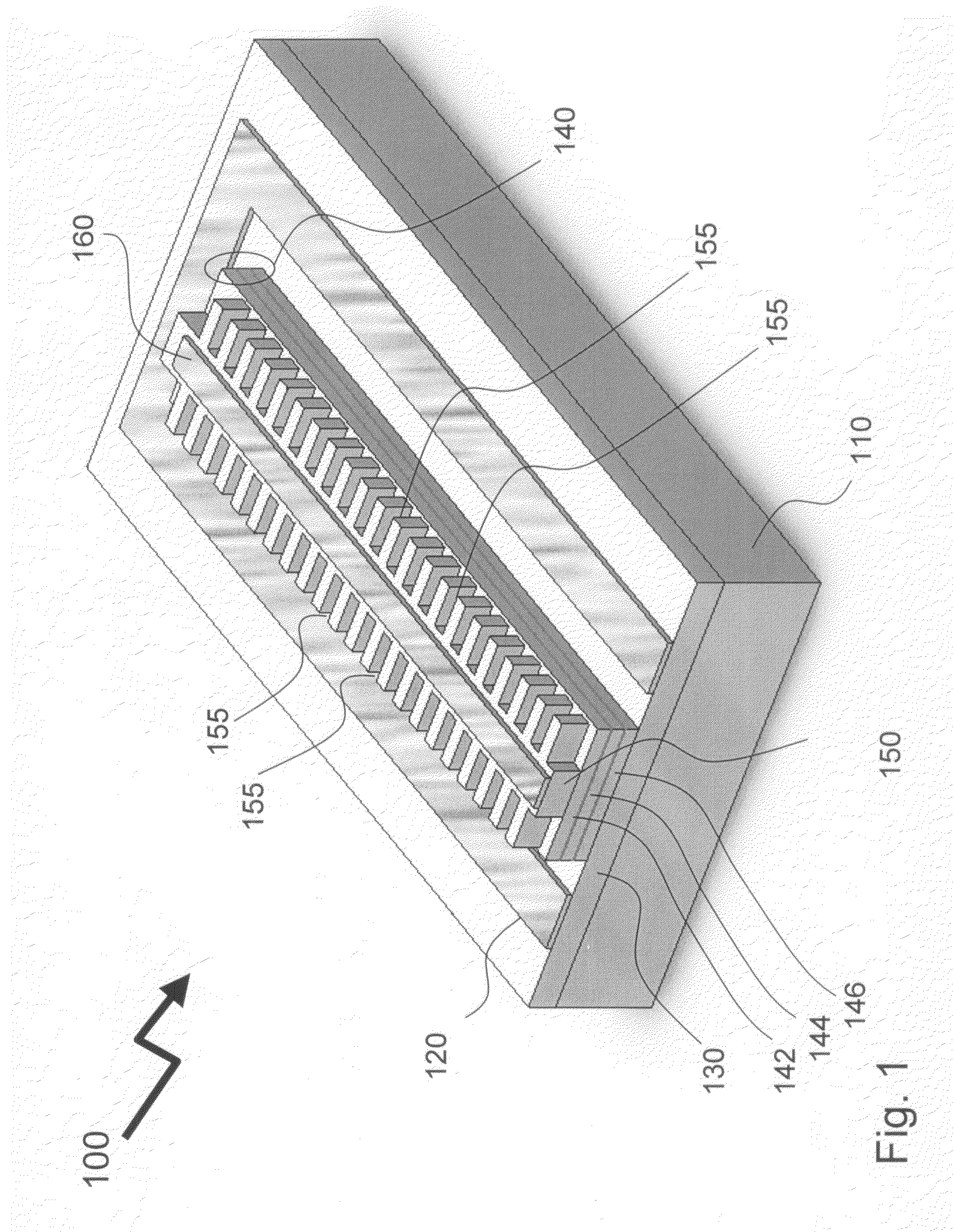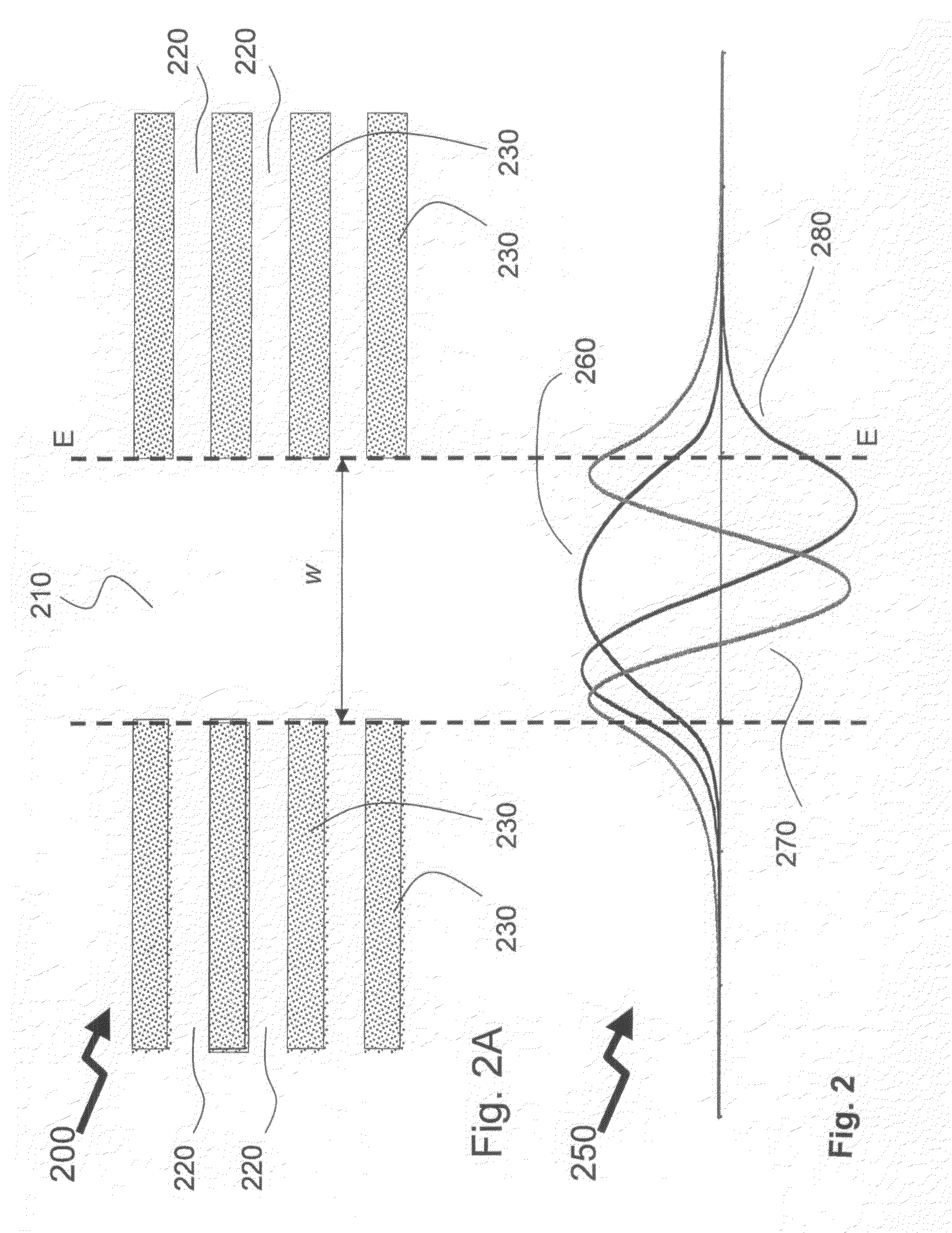Enhanced efficiency laterally-coupled distributed feedback laser
- Summary
- Abstract
- Description
- Claims
- Application Information
AI Technical Summary
Benefits of technology
Problems solved by technology
Method used
Image
Examples
first embodiment
[0048]FIG. 3 shows the cross sectional view of a side contact LC-SEG DFB laser according to the The GaInAsP—InP laser layer structure, which is tabulated in Table 1, is adapted from a design described by J. Piprek et al, “Cavity Length Effects on Internal Loss and Quantum Efficiency of Multiquantum-Well Lasers”, IEEE J SEL TOP QUANT., 5, PP. 643-647, 1999.
TABLE 1EXEMPLARY LAYER STRUCTURE USED IN SIMULATIONSLayerMaterialRefractive IndexThickness (μm)1.P-CapInGaAs (P-doping 1019 cm−3)3.512 + i 0.140.152.Upper-ContactInP (P-doping 1018 cm−3)3.166 + i 3.1 10−40.853.Upper SCHGaInAsP (λg = 1150 nm)3.3220.14.Active MQWGaInAsP (λg = 1250 nm)3.4440.0176 Wells: Ga0.76In0.24As0.79P0.216 × 0.0055(1% compressive strain)5 Barriers: GaInAsP (λg = 1250 nm)5 × 0.0064GaInAsP (λg = 1250 nm)0.0175.Lower SCHGaInAsP (λg = 1150 nm)3.3220.26.Lower-ContactInP (N-doping 5 × 1018 cm−3)3.1390.57.InP BufferInP3.1690.58.SubstrateInP3.169N / A
[0049]As is shown in table 1, the laser structure consists of an MQW act...
second embodiment
[0061]FIG. 6 is a schematic three-dimensional of another embodiment of an enhanced coupling efficiency side-contact LC-DFB 600 according an multiple effective ridge design of the The laser layer structure of the enhanced coupling efficiency side-contact LC-DFB 600 is similar to that of FIG. 1 and comprises: a semi-insulating substrate 110; a lower contact layer 130; a lower SCH layer 142; an active layer 144, upper SCH layer 146; and an upper contact layer 150. The LC-SEG is located on top of the mesa region which is defined by etching from the top surface into the lower contact layer. The LC-SEG waveguide structure is defined by a periodic sequence of four parallel segmented trenches 610 through 650 which are formed by etching from the top surface of the structure into the upper SCH layer such that the intact material formed between the trenches forms a two side ridges 650, 660 in addition to a central effective ridge 670. The combination of the mesa; effective ridge; and LC-SEG p...
third embodiment
[0062]Shown in FIG. 7 is a schematic three-dimensional of another embodiment of an enhanced coupling efficiency side-contact LC-DFB 700 according the metal grating design of the The laser layer structure of the enhanced coupling efficiency side-contact LC-DFB 700 is similar to that of FIG. 1 and comprises: a semi-insulating substrate 110; a lower contact layer 130; a lower SCH layer 142; an active layer 144; an upper SCH layer 146; and an upper contact layer 150. In this a periodic sequence of identical metal strips 710, 720 which are selectively deposited, by direct writing e-beam or optical stepper lithography, on either side of a central effective ridge 730 on the etched surface between the base of the central effective ridge and the edge of the mesa. The combination of the mesa; central effective ridge 730; and metal grating formed from the identical metal strips 710, 720 is provide lateral confinement for the slab waveguide which is formed by the laser layer structure of the e...
PUM
 Login to View More
Login to View More Abstract
Description
Claims
Application Information
 Login to View More
Login to View More - R&D
- Intellectual Property
- Life Sciences
- Materials
- Tech Scout
- Unparalleled Data Quality
- Higher Quality Content
- 60% Fewer Hallucinations
Browse by: Latest US Patents, China's latest patents, Technical Efficacy Thesaurus, Application Domain, Technology Topic, Popular Technical Reports.
© 2025 PatSnap. All rights reserved.Legal|Privacy policy|Modern Slavery Act Transparency Statement|Sitemap|About US| Contact US: help@patsnap.com



